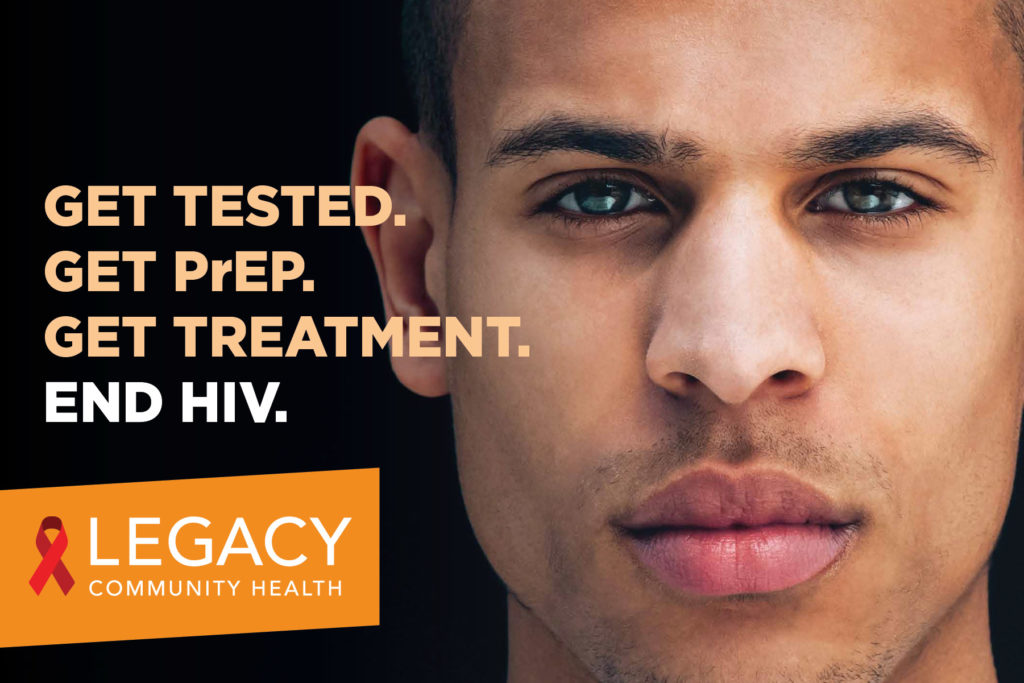By Barrett White
“I don’t have HIV, I’m not gay,” said Kalvin Marshall, in disbelief, at learning he was living with HIV. But he was and so was his wife Eunice.
The Marshalls are members of Positive Organizing Project (POP+), an advocacy training program designed by and for people living with HIV/AIDS. They were given no guidance or information on the disease, which is what drives the passionate couple in their advocacy today.
The Marshalls’ story is not unique, unfortunately. HIV prevention, outreach, and education aimed toward communities of color is lacking. Over half of the deaths in the U.S. attributed to HIV/AIDS occur in the South. Of Black men who have sex with men in the U.S., 48 percent of live in the Deep South. It is in this region that the disparity of HIV education and prevention is most clear.
Texas’ large metropolitan centers bear much of the brunt. In Houston, where there is a large African American population, there are 4.5 African Americans diagnosed with HIV for every White person. But it is African American women who make up a significant portion of diagnoses: for every White woman in Houston diagnosed with HIV, there are 21.1 African American women according to AIDSVu. The majority of these diagnoses among African American woman occur by heterosexual sex.
Because a significant portion of HIV transmissions are among men who have sex with men, the myth that HIV is a “gay disease” persists. In order to reach the Black heterosexual community, and work to prevent the spread of HIV within it, a change must be made: A focus on “treatment as prevention” is imperative. Bring in as many people for HIV testing as possible by making testing attractive to wide audiences, put those at risk for HIV on prevention therapy, put those already living with HIV on antiretroviral therapy as soon as possible, and follow-up with dogged determination. This is especially vital in Texas, where nearly 20 percent of the population does not have health insurance—those who are uninsured and underinsured are likely to not seek these services out themselves until it is too late.
Programs like POP work as an advocacy training program by and for people living with HIV. The group advocates on issues that affect those living with the virus to educate those living with it, and to empower them into using their own voices to get involved with other HIV organizations. Of all new HIV infections in the African American community, over half were men who identified as gay or bisexual. The CDC predicts that if trends continue, that one in two gay and bisexual African-American men will be infected with the virus within their lifetime.
A person living with HIV who is adhering to a prescribed antiretroviral treatment that results in a suppressed or undetectable viral load are able to live longer, healthier lives with virtually no risk of transmitting the virus to a HIV- partner. HIV.Gov reports that too few African Americans living with HIV are receiving HIV care and achieving and maintaining a suppressed viral load. In addition to that, the CDC indicates that only 59 percent of African Americans living with HIV received HIV medical care in 2014 with fewer (only 46 percent) retained in care, and even fewer still (43 percent) achieving a suppressed viral load.
The good news is, progress is, in fact, being made within portions of the African American community. Among African American women, the number of HIV diagnoses fell by 20 percent between 2011 and 2015.
According to the Ryan White HIV/AIDS Program, viral suppression among African American Ryan White clients increased from just over 60 percent in 2010 to over 80 percent in 2016. This demonstrates that the Ryan White HIV/AIDS Program’s comprehensive system of HIV care has proven effective.
Better deployment of preventative measures and community engagement is crucial to addressing the health disparity present with HIV prevention and treatment. If we expect to lower transmission rates or bridge the treatment gap, we have to better engage the communities most at risk. Get tested and know your status. Prevention is key: PrEP (pre-exposure prophylaxis), when taken daily and consistently, can reduce the risk of contracting the virus by more than 90 percent. If you learn that you’re living with HIV, it is crucial that you seek care immediately. Accessing highly active antiretroviral therapy (HAART) can reduce your viral load to a manageable level, making it virtually impossible to transmit HIV to your partner. Complacency has no place in this national health issue.
“HIV doesn’t discriminate—whether you’re rich, poor, black, white, gay, bisexual, heterosexual, or transgender. Your sexual orientation doesn’t put you at risk. Having unprotected sex and not knowing your status does,” says Eunice Marshall.

